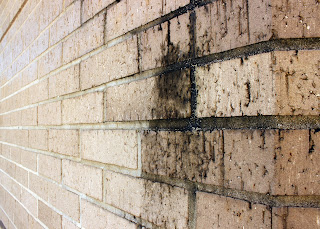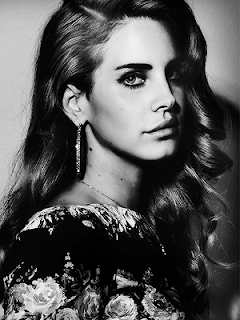Final Exam Review
Balancing Elements- Using the rule of thirds, adding another object that's lesser than the other allows the lesser object to fill empty space.
Leading Lines- Lines attract our eyes and we follow the trail of lines. Where to lines are in the photo effect the visual effect of the photo and it will or will not draw people into the photo.
Viewpoint- Choosing your viewpoint affects the message that you're giving. Shooting from different levels besides eye level allows people to see the photo in a different perspective.
Background- Avoid having a busy background by looking around for plain or unobtrusive background, so it doesn't take away from the main subject of the photo.
Depth- Adding objects in the foreground, middle ground and background creates depth. Naturally, the human eye recognizes these different layers and separates them.
Cropping- Cropping around the main subject draws more attention to it and eliminates the other objects in the background.
Framing- Using natural objects to create a border or frame around the photo.
Avoiding Mergers- Focusing your image on a main subject and avoiding having anything elements that will take away from your main subject.
Rule of Thirds- The image is divided into 9 segments by 2 vertical and 2 horizontal lines. You should position the most important elements into your scene along these lines, or at points where they intersect.
Symmetry and Patterns- Make for eye-catching compositions, even in places where they're not expected. A great way to use it is to introduce tension and a focal point to the subject.
Aperture- We relate aperture to our pupils. The smaller the aperture, the larger the F-stop is, and vise versa. The higher the aperture, the smaller the F-stop is.
Shutter Speed- When the shutter speed is fast it allows to freeze action, when the shutter speed is slow it creates a blur along the movement of objects. Slow shutter speed is used to create a sense of motion. Long shutter speed are above one second and using a tripod with long shutter speed makes the photo sharper. Long shutter speed is used for low-light/nighttime photography.
ISO- Shooting at a higher ISO allows the camera to catch a picture quicker. When you have plenty of light you should shoot using a lower ISO to give you a clearer picture with more detail. When there is not enough lighting using a higher ISO allows you to capture a better photo.
Early- The magazine covers were drawings that had a limited amount of words.
Poster- Usually of a picture and the title of the magazine and a barcode.
Married to Type- There are a lot of words on the magazine, but the words do not cover the subject of the image.
Forest of Words- Forest of Words magazines are a lot of different headlines/teasers that are hard to read and most of the time these words cover the main subject of the photo.
Exposure- the amount of light per unit area
Depth of Field- AKA focus range, the distance between the nearest and farthest objects in a scene that appears acceptably sharp in an image.
Focal Length- Affects the Depth of Field, the focus of an image taken form different distances.
Leading Lines- Lines attract our eyes and we follow the trail of lines. Where to lines are in the photo effect the visual effect of the photo and it will or will not draw people into the photo.
Viewpoint- Choosing your viewpoint affects the message that you're giving. Shooting from different levels besides eye level allows people to see the photo in a different perspective.
Background- Avoid having a busy background by looking around for plain or unobtrusive background, so it doesn't take away from the main subject of the photo.
Depth- Adding objects in the foreground, middle ground and background creates depth. Naturally, the human eye recognizes these different layers and separates them.
Cropping- Cropping around the main subject draws more attention to it and eliminates the other objects in the background.
Framing- Using natural objects to create a border or frame around the photo.
Avoiding Mergers- Focusing your image on a main subject and avoiding having anything elements that will take away from your main subject.
Rule of Thirds- The image is divided into 9 segments by 2 vertical and 2 horizontal lines. You should position the most important elements into your scene along these lines, or at points where they intersect.
Symmetry and Patterns- Make for eye-catching compositions, even in places where they're not expected. A great way to use it is to introduce tension and a focal point to the subject.
Aperture- We relate aperture to our pupils. The smaller the aperture, the larger the F-stop is, and vise versa. The higher the aperture, the smaller the F-stop is.
Shutter Speed- When the shutter speed is fast it allows to freeze action, when the shutter speed is slow it creates a blur along the movement of objects. Slow shutter speed is used to create a sense of motion. Long shutter speed are above one second and using a tripod with long shutter speed makes the photo sharper. Long shutter speed is used for low-light/nighttime photography.
ISO- Shooting at a higher ISO allows the camera to catch a picture quicker. When you have plenty of light you should shoot using a lower ISO to give you a clearer picture with more detail. When there is not enough lighting using a higher ISO allows you to capture a better photo.
Early- The magazine covers were drawings that had a limited amount of words.
Poster- Usually of a picture and the title of the magazine and a barcode.
Married to Type- There are a lot of words on the magazine, but the words do not cover the subject of the image.
Forest of Words- Forest of Words magazines are a lot of different headlines/teasers that are hard to read and most of the time these words cover the main subject of the photo.
Exposure- the amount of light per unit area
Depth of Field- AKA focus range, the distance between the nearest and farthest objects in a scene that appears acceptably sharp in an image.
Focal Length- Affects the Depth of Field, the focus of an image taken form different distances.


Comments
Post a Comment